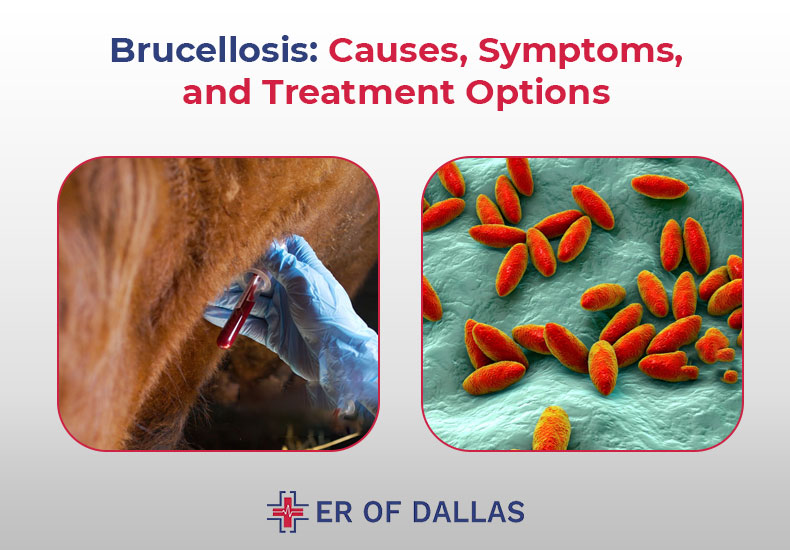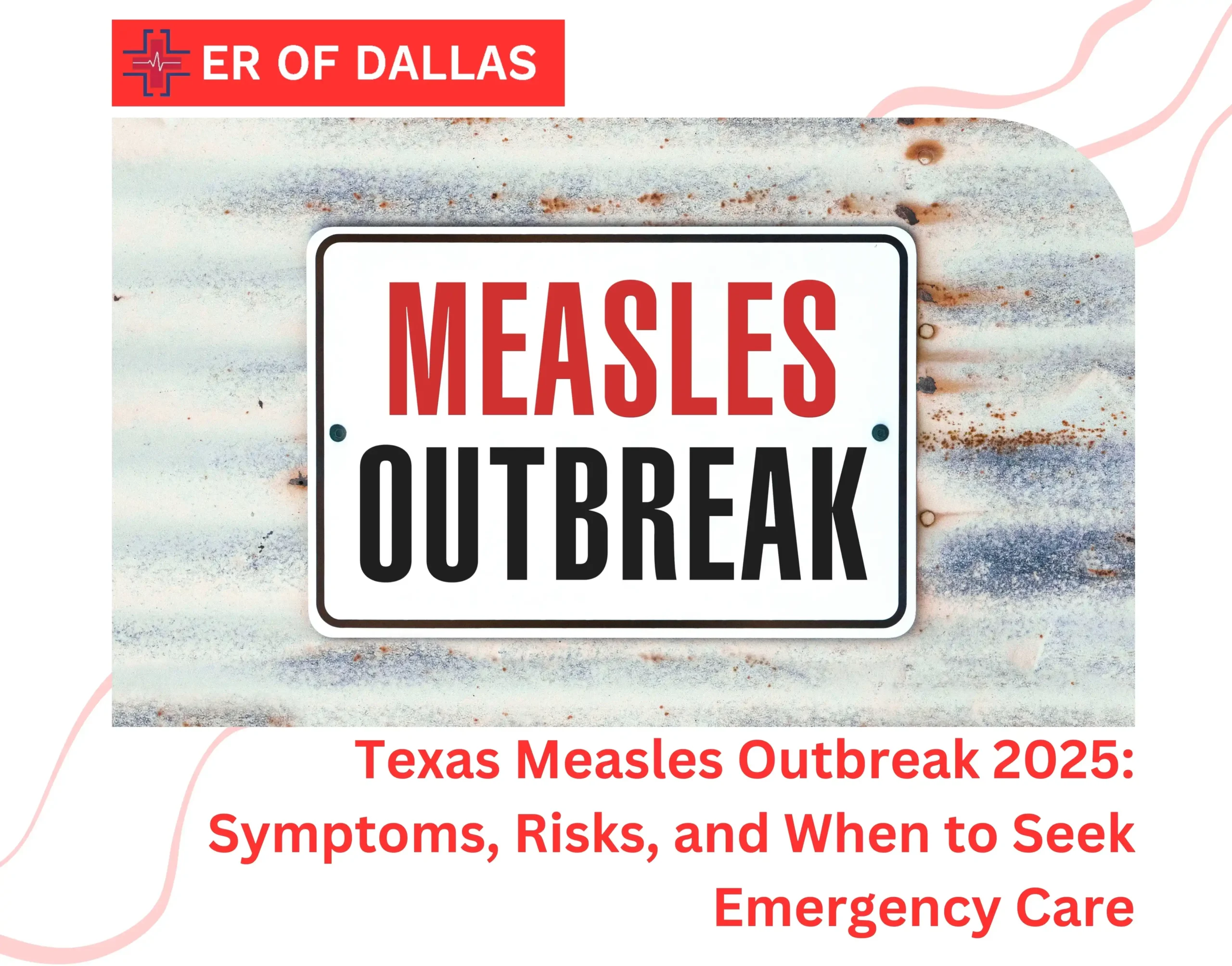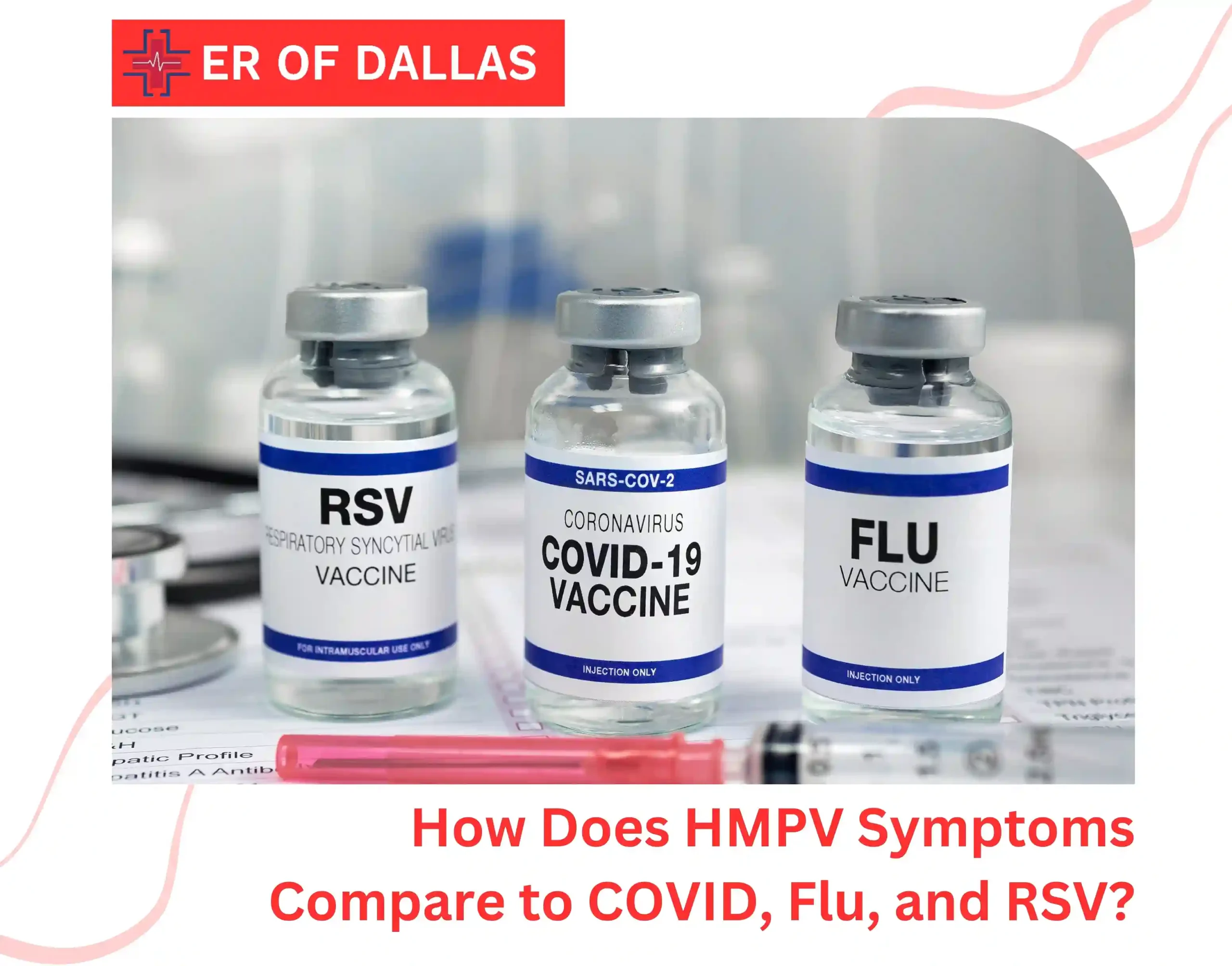A bacterial infection called brucellosis can transfer from animals to humans. People typically contract the infection via consuming raw or unpasteurized dairy products. The bacteria that cause brucellosis can occasionally be transferred by direct contact with diseased animals or through the air.
The illness known as brucellosis can cause fever, joint pain, and exhaustion. Antibiotics are typically effective in treating the infection. However, the illness might return, and treatment takes a few weeks to months.
Worldwide, brucellosis affects hundreds of thousands of humans and animals. Brucellosis can be avoided by avoiding raw dairy products and by using caution when handling animals or in a lab.
What is Brucellosis?
The illness known as Brucellosis, or “bru-cell-OH-sis,” is caused by the bacteria Brucella. It may create nebulous symptoms that come and go over an extended period, such as fever, joint pain, and sweating.

As a zoonotic illness, brucellosis is contracted from animals. Along with many other names, it is also occasionally referred to as Mediterranean fever, Malta fever, and undulant fever.
How Does Brucellosis Affect?
The majority of nations on Earth are home to brucellosis. A Brucella infection is more likely to occur if you:
- Consume raw meat and unpasteurized dairy products.
- Work with animals or as a veterinarian.
- Either hunt animals or wear field attire.
- Labor on a ranch or dairy farm.
- Join a lab that deals with Brucella.
Brucellosis: What Does It Do to Humans?
The brucellosis-causing bacteria, Brucella, enters your body through your mouth, nose, eyes, or any opening in your skin. It then enters your tissues or lymph nodes, where it gradually grows. From there, it can cause swelling and damage to practically every organ of your body, including the liver, brain, heart, and bones.
How Common Is Brucellosis?
Every year, there are roughly 500,000 cases of brucellosis reported globally. In the United States, there are only 100 to 200 cases of brucellosis annually.
Worldwide, brucellosis affects hundreds of thousands of humans and animals. Brucellosis can be avoided by avoiding raw dairy products and by using caution when handling animals or in a lab.
Is Brucellosis a STI?
It is not believed that brucellosis is a sexually transmitted infection (STI). Rare instances of brucellosis spreading through intercourse have been reported.
Brucellosis Symptoms
It may take up to four weeks for brucellosis symptoms to manifest after being exposed to the bacteria. The following symptoms may appear and disappear over months or years:
- High temperature.
- Depression.
- Weeping (sometimes with a rotten odor).
- Large lymph nodes that hurt.
- Joint pain, particularly in the lower back, hips, or knees.
- Stomach discomfort or appetite loss.
- Feeling bad all around.
- Unaccounted-for weight loss.
- Headache.
- Stomach or abdominal ache.
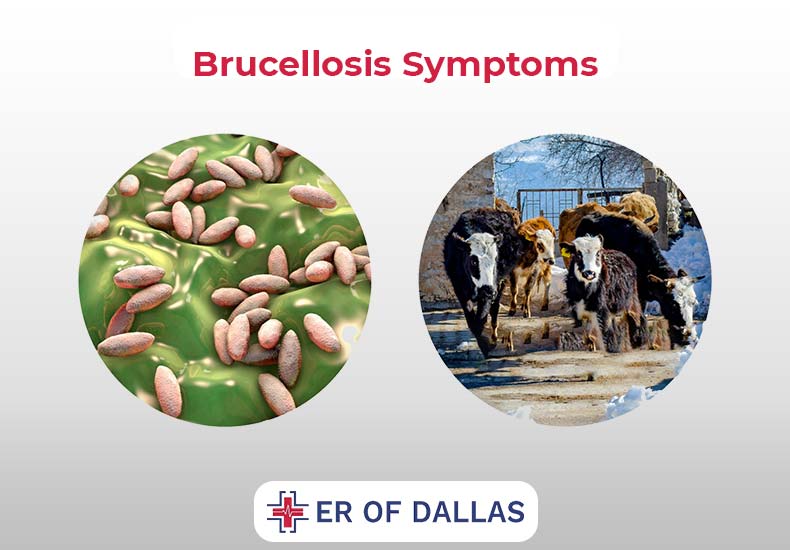
The symptoms of brucellosis may go away for a few weeks or months before coming again. Even after receiving therapy, some patients with persistent brucellosis continue to have symptoms for years. Long-term indicators and symptoms could consist of:
- Spinal bone arthritis (spondylitis)
- Weary
- Frequent fevers
- Arthritis in the joints that link the pelvis and spine (sacroiliitis)
- Endocarditis, or inflammation of the heart’s inner lining
- Irritation of the joints (arthritis)
What Causes Brucellosis?
Brucella bacteria, namely B. abortus, B. canis, B. meliensis, and B. suis, are the causative agents of brucellosis. Animals that harbor Brucella include:
- Goat
- Pigs
- Deer
- Moose
- Sheep
- Dogs
- Camels
- Elk
- Cattle
Porpoises, harbor seals, and some whales are also afflicted with a kind of brucellosis.
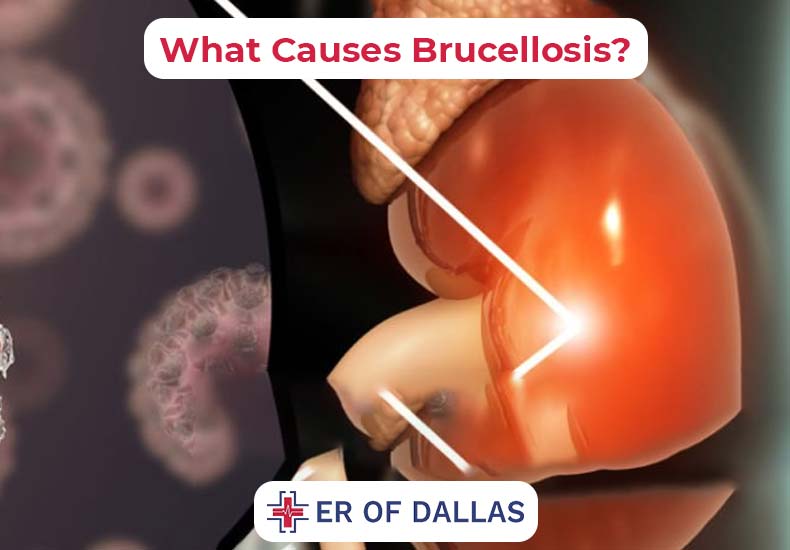
The following are the main ways that germs enter humans from animals:
- Contacting the bodily fluids and blood of affected animals. Through a cut or other wound, bacteria from the blood, semen, or placenta of an infected animal might enter your circulation. Brucellosis is uncommonly contracted by people from their pets since typical animal interaction, such as playing, stroking, or caressing, does not spread illness. Nevertheless, touching dogs that are known to be ill should be avoided by those with compromised immune systems.
- Consuming dairy products in their unprocessed state. Humans can become infected with Brucella bacteria through unpasteurized milk, ice cream, butter, and cheeses that contain the bacteria. The meat of infected animals that is uncooked or undercooked can potentially spread the bacterium.
- Breathing in tainted air. The bacteria Brucella spreads easily through the air. The bacterium can be inhaled by workers in slaughterhouses, lab technicians, farmers, and hunters.
How Is Brucellosis Transmitted?
Contact with diseased animals or unpasteurized dairy products can spread brucellosis. Brucellosis can be contacted by:
- Consuming raw (unpasteurized) milk in the form of milkshakes, cheese, ice cream, and other foods. Milk from infected animals is tainted. Even though sheep, goats, cows, or camels have brucellosis, you can still safely drink their milk since pasteurization destroys the bacterium.
- Eating meat that isn’t cooked enough.
- From the expectant mother to her unborn kid.
- Through means of nursing or chestfeeding.
- Via sexual relations.
Brucellosis Test
By inquiring about your symptoms and examining your blood, tissues, or other samples for evidence of the bacteria Brucella, a medical professional at the ER of Dallas can diagnose brucellosis. Since brucellosis symptoms can mimic those of other illnesses, your doctor may run tests to rule out other ailments.
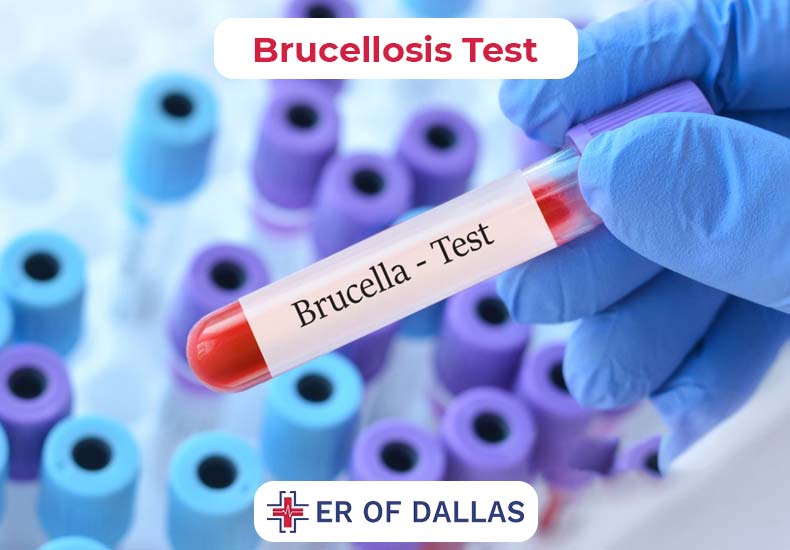
Culture of the bacterium from bodily fluids or tissue is the most reliable method of confirming a Brucella infection. Since brucella grows slowly, it could take many weeks to receive a definitive diagnosis. To screen for Brucella symptoms, you might need to undergo many blood tests for a few weeks.
To help diagnose brucellosis, your doctor may collect bodily fluid samples and do imaging or other tests, such as the following:
- Various bodily fluid tests. To check for Brucella symptoms or monitor its growth over time, your healthcare professional may collect fluid samples from your joints, spinal canal, or other body regions.
- Tissue sample. To detect Brucella or cultivate it over time, your healthcare professional could extract samples from your bone marrow or other tissues.
- Visualizing. Your doctor might order an echocardiography, bone scans, CT scans, MRIs, X-rays, ultrasounds, or an MRI, depending on which sections of your body are impacted. These take images of the interior of your body to check for changes in your organs or bones.
- Blood examinations. Using a needle, your healthcare professional will draw blood from your arm. Your blood can be tested for Brucella antibodies, antigens, or DNA in a lab, or the virus can be cultured and allowed to proliferate over time.
Brucellosis Vaccine To Treat It
The following antibiotics are recommended by medical professionals to treat brucellosis:
- Gentamicin or streptomycin.
- Rifampin.
- Doxycycline.
- TMP/SMX stands for trimethoprim/sulfamethoxazole.
- Ciprofloxacine.
Your doctor will use a minimum of two different antibiotics in combination to treat brucellosis. They must be taken for a minimum of six to eight weeks. You might require additional therapy (such as draining infected areas or controlling problems) based on your unique situation.
How To Manage The Symptoms of Brucellosis?
Joint pain and fever are two symptoms of brucellosis that you may be able to treat at home in addition to taking prescription antibiotics to eradicate the bacteria. Find out from your doctor whether there are any safe over-the-counter (OTC) drugs or alternative therapies that can help with your symptoms.
Prevention For Brucellosis
When working with animals, you should wear protective clothing and practice safe food handling to lower your chance of contracting brucellosis. For example:
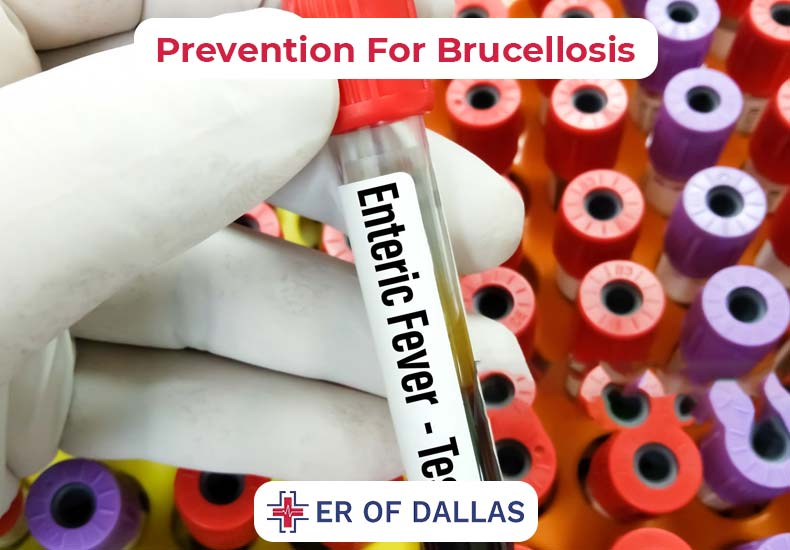
- Avoid consuming unpasteurized milk products or drinking them.
- Wear the proper protective clothing when handling animal tissues and animals. This might be goggles, an apron, or gloves. Those who work in slaughterhouses or medical laboratories, as well as hunters, farmers, veterinarians, and butchers, need to exercise extra caution.
- Handle all specimens under the proper biosafety circumstances if you operate in a laboratory. Additionally, slaughterhouses must adhere to safety precautions including wearing protective gear and keeping the killing floor isolated from other processing areas.
- Always wash your hands, as well as the surfaces and utensils you used to create your food and cook meat to safe temperatures. Game meat may carry the Brucella virus.
- A vigorous immunization campaign in the US has almost completely eradicated brucellosis in cattle herds. The brucellosis vaccine can infect humans because it is a live vaccine. If an animal vaccine goes wrong and a person accidentally sticks their needle, they should get medical attention.
What can I expect if I have Brucellosis?
With antibiotic therapy, the majority of brucellosis patients will fully recover, however, it may take some time. Antibiotics will likely be prescribed for a few weeks or months to ensure that all germs have been eradicated from your body.
After therapy is complete, brucellosis can recur occasionally, particularly if you don’t take antibiotics for a long enough time. Even when therapy is completed, some symptoms, such as arthritis, may persist for a very long time. If you experience problems with brucellosis, you could require further medicine or treatment.
Complication of Brucellosis
Nearly every organ in the body, including the liver, heart, central nervous system, and reproductive system, can be impacted by brucellosis. Problems with chronic brucellosis might affect one organ at a time or the entire body. Among the potential issues are:
- Arthritis. Pain, stiffness, and swelling in the joints—particularly the spine, knees, hips, ankles, and wrists—are indicative of joint inflammation. Spondylitis, or inflammation of the spine’s joints, and sacroiliitis, or inflammation of the joints connecting the lower spine to the pelvis, can be very difficult to treat and result in permanent harm.
- Testicular inflammation and infection (epididymal-orchitis). The epididymis, a coiled tube that joins the vas deferens and the testicle, is susceptible to infection by the bacteria that cause brucellosis. From there, the infection can proceed to the testicle itself, where it might result in excruciating pain and swelling.
- Endocarditis, or inflammation of the heart’s inner lining. One of the most dangerous side effects of brucellosis is this. Untreated endocarditis is the main cause of mortality from brucellosis and can harm or destroy the heart valves.
- Liver and spleen infection and inflammation. The liver and spleen may also be affected by brucellosis, which might result in their enlargement beyond normal.
- Infections of the central nervous system. These include potentially fatal diseases like encephalitis, which is an inflammation of the brain, and meningitis, which is an infection of the membranes protecting the brain and spinal cord.
FAQs
Is it possible to treat human Brucella?
Antibiotics can indeed treat human Brucella infections. Nonetheless, certain issues may result in long-term harm.
Is brucellosis a fatal disease?
It is uncommon for brucellosis to cause death. Between 1% and 2% of all cases of brucellosis result in death.
When is a good time to visit the ER?
If you have any of the following signs of a serious disease, visit the ER:
- Elevated fever (over 103.4 degrees Celsius/103 degrees Fahrenheit).
- Severe pain in the abdomen, or stomach.
- Uncertainty or other mental alterations.
How should I care for myself if I have brucellosis?
Even if you feel better, if you have been diagnosed with brucellosis, you still need to take all of your medication as directed by your doctor. Antibiotic withdrawal prematurely increases the risk of brucellosis recurrence. Should your symptoms be worsening or new, get in touch with your provider.
When ought I to visit my medical professional?
If you have brucellosis symptoms, see a doctor, especially if you are at risk of infection from your job or hobbies.
What inquiries ought I make of my provider?
- What is the duration of treatment?
- How should my medication be taken?
- How can my symptoms be controlled at home?
- When ought I to get back to you?
- Which symptoms call for an ER visit?
Conclusion
A rare bacterial infection that develops gradually and can last for a long time is called brucellosis. Since it can mimic many other conditions, it’s critical to see a medical professional to have an accurate diagnosis and course of treatment. Although brucellosis normally doesn’t cause much harm, it’s vital to closely monitor your symptoms because it can infect your bones and organs. Please don’t wait to get in touch with your doctor or nearest emergency care if you experience any new or concerning symptoms.

